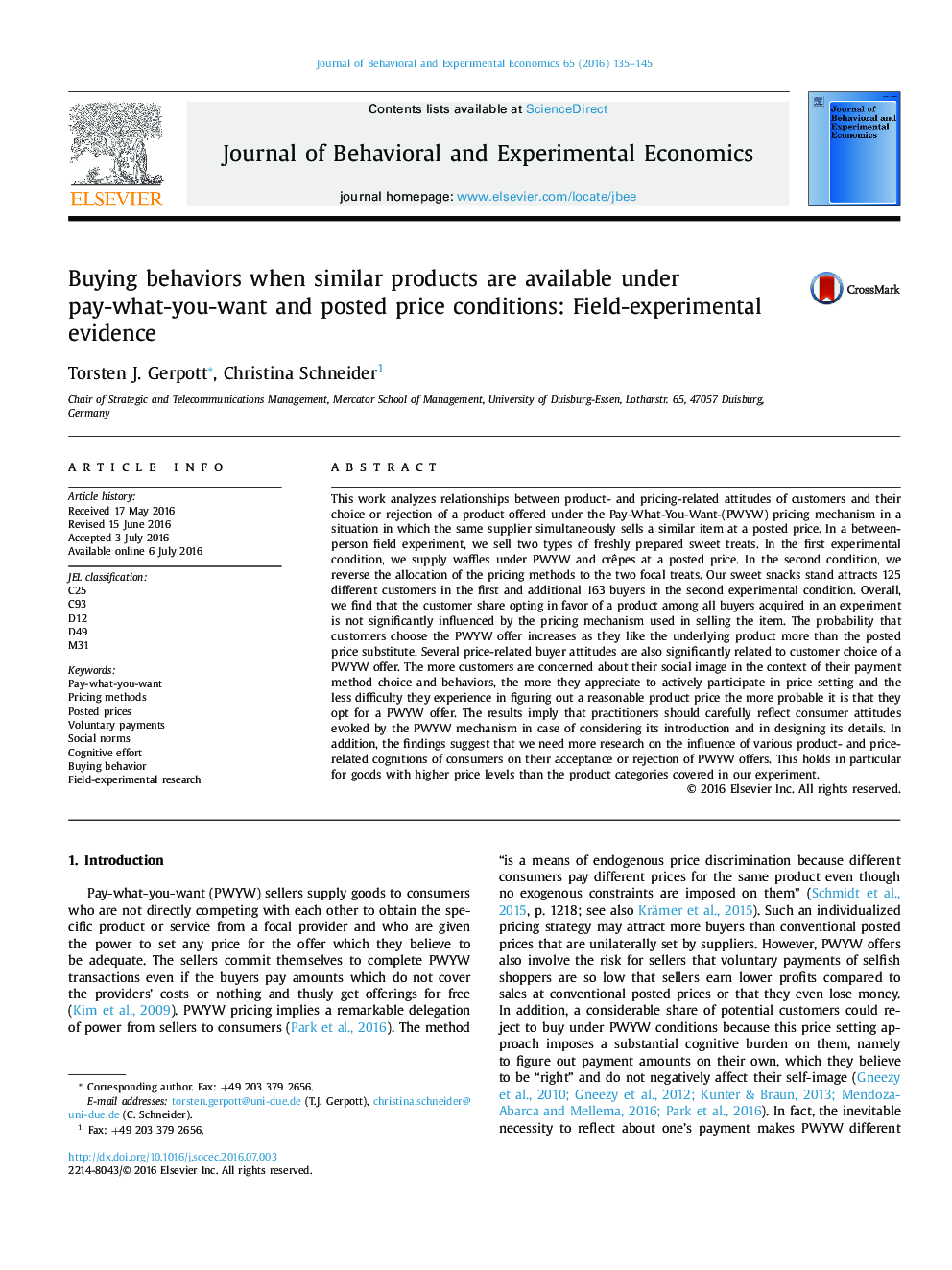| Article ID | Journal | Published Year | Pages | File Type |
|---|---|---|---|---|
| 5034171 | Journal of Behavioral and Experimental Economics | 2016 | 11 Pages |
â¢Explores customer reactions to a PWYW offer when a similar posted price product is available.â¢Conducts a two-condition between-person field experiment with a total of 288 customers buying sweat treats.â¢Finds that customer share opting in favor of a product among all buyers is not significantly influenced by the pricing mechanism.â¢Reports associations between choice of a PWYW offer and product- and pricing-related attitudes of customers.
This work analyzes relationships between product- and pricing-related attitudes of customers and their choice or rejection of a product offered under the Pay-What-You-Want-(PWYW) pricing mechanism in a situation in which the same supplier simultaneously sells a similar item at a posted price. In a between-person field experiment, we sell two types of freshly prepared sweet treats. In the first experimental condition, we supply waffles under PWYW and crêpes at a posted price. In the second condition, we reverse the allocation of the pricing methods to the two focal treats. Our sweet snacks stand attracts 125 different customers in the first and additional 163 buyers in the second experimental condition. Overall, we find that the customer share opting in favor of a product among all buyers acquired in an experiment is not significantly influenced by the pricing mechanism used in selling the item. The probability that customers choose the PWYW offer increases as they like the underlying product more than the posted price substitute. Several price-related buyer attitudes are also significantly related to customer choice of a PWYW offer. The more customers are concerned about their social image in the context of their payment method choice and behaviors, the more they appreciate to actively participate in price setting and the less difficulty they experience in figuring out a reasonable product price the more probable it is that they opt for a PWYW offer. The results imply that practitioners should carefully reflect consumer attitudes evoked by the PWYW mechanism in case of considering its introduction and in designing its details. In addition, the findings suggest that we need more research on the influence of various product- and price-related cognitions of consumers on their acceptance or rejection of PWYW offers. This holds in particular for goods with higher price levels than the product categories covered in our experiment.
